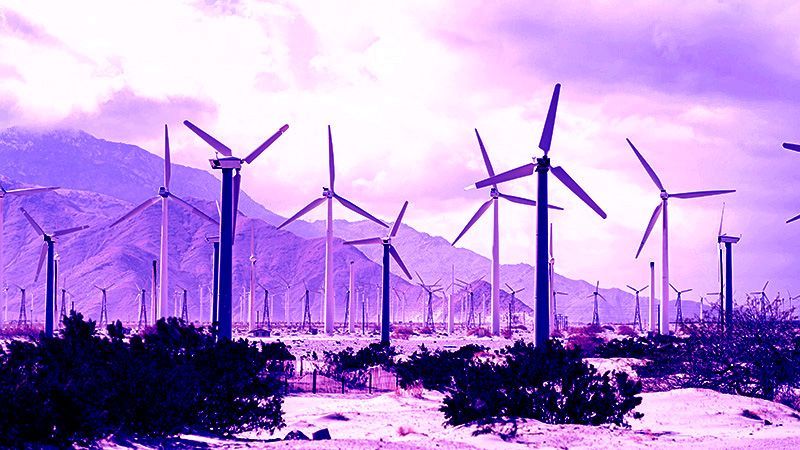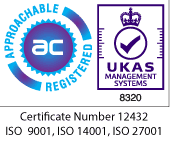The Hidden Shock: Why UK Businesses Face a Surge in Non-Commodity Electricity Costs and What to Do Now
KEY TAKEAWAYS
- Non-commodity charges now make up the majority of business electricity bills: Wholesale prices may have stabilised, but grid, policy and system costs are rising fast — and they’re becoming the real driver of energy spend.
- These charges are set to surge over the next two years: Transmission, distribution and balancing costs are climbing sharply, meaning bills will rise even if consumption doesn’t.
- Cutting usage won’t guarantee lower costs: Many of the fastest-growing line items are fixed or capacity-based, so reductions in kWh alone won’t protect budgets.
- Businesses must reshape how they forecast, contract and operate: Accurate budgeting, contract review, meter optimisation and demand flexibility are now essential to controlling exposure.
4 MIN READ
Introduction
Even as wholesale electricity prices stabilise, a new wave of cost pressure is hitting UK businesses, and it is not coming from the energy market itself.
Over half of a typical business’ electricity bill now comes from non-commodity charges; these sources include the grid, balancing, policy, and standing costs that fund the UK’s transition to a net-zero energy system. These charges are rising sharply as the country races to reinforce an aging network, integrate renewables, and finance new nuclear capacity.
At a recent UK Energy Select Committee session (October 2025), EDF’s CEO Simone Rossi warned MPs that “business electricity bills could rise by 20% over the next four years, even if wholesale prices were cut in half.”
In other words: even if markets calm, your costs won’t.
In this Insight Article, we will explain why non-commodity costs are now the biggest driver of business electricity spend; what to expect over the next decade; and, most importantly, how your organisation can prepare, mitigate, and even turn these trends into strategic advantage.
The New Cost Reality: Where the Increases are Coming From
Non-commodity costs (the portion of your bill that is not the electricity itself) include transmission and distribution network charges (TNUoS, DUoS), balancing and system costs (BSUoS), and policy levies such as Contracts for Difference (CfD) of the new nuclear RAB levy.
Each of these costs is rising for different reasons (largely due to continued under-investment by successive UK governments over the past three decades) but together they form a powerful incline.
Transmission (TNUoS): The Big Jump Starts 2025
Network investment to reinforce the grid is driving a near-doubling of fixed residual transmission charges, from £3.8bn in 2025/26 to around £7.5bn in 2026/27. These costs are passed on as fixed standing charges, which will vary by region. For multi-site operators, regional differentials could become material line-items in budgets.
Balancing & System Costs (BSUoS): The Renewables Paradox
With more renewable generation and a still-constrained grid, balancing costs keep climbing. Even as low-carbon energy expands, system flexibility lags behind, meaning higher costs for managing intermittency.
Until storage, demand response, and grid reinforcements catch up, BSUoS will remain volatile and elevated.
Distribution (DUoS): Rising with Electrification
Distribution costs are increasing as networks upgrade for EVs, heat pumps, and industrial electrification. The trend is toward more fixed and capacity-based recovery rather than pure per-kWh charges, shifting cost exposure toward your site configuration and load profile.
Policy Levies: New & Persistent
- Nuclear RAB Levy: Starting in late 2025, to fund new nuclear generation capacity at Sizewell C, the Nuclear RAB Levy will add a new cost line for all consumers.
- Contracts for Difference (CfD): This works counter-cyclically – when wholesale prices drop, supplier payments rise.
- Legacy Schemes (RO, FiT): This will continue to weigh on bills for non-EII (Energy Intensive Industries) customers (those not exempt as Energy-Intensive Industries).
Standing Charges: The Silent Budget Killer
Many large businesses now face daily standing charge increases of £30 or more per site. Because these are fixed costs, even highly efficient or low-usage sites will see higher total bills.
“Large energy users in Britain are set to face a sharp rise in non-commodity costs – adding up to £450,000 to annual bills.” (Energy Advice Hub, 24 September 2025)
The key takeaway from this: energy efficiency alone will no longer guarantee lower bills.
Budgets and Procurement
Even if your kWh consumption falls, your electricity spending may not. This is because the proportion is fixed and policy-linked costs are increasing, while variable commodity exposure is shrinking.
For most corporate customers:
- Standard contracts won’t protect you: Non-commodity costs are typically ‘pass-through’, meaning that suppliers charge the full amount, without mark-up and without caps.
- Standing charges per site: This means that portfolio design now matters, and reducing the number of metered sites or rationalising MPANs could directly cut costs.
- Cost allocation is changing: More fixed/capacity components mean that your load profile, peak demand, and location matter more than total consumption.
In summary, you can no longer treat non-commodity costs as a small add-on; they are now central to your cost-risk model.
The 5-10 Year Outlook: What to Budget For Transmission Charges (TNUoS)
Trend: Sharp increase through 2026-2030, possibly stabilising later.
Budget Impact: Expect near-doubling of fixed charges by 2026/27. Model per-site costs and review regional variations.
Action:
- Rationalise sites/meters where possible.
- Build future transmission uplifts into capital investment models.
Balancing & Constraint Costs (BSUoS)
Trend: Elevated and volatile through late 2020s.
Budget Impact: Hard to forecast; risk of doubling under constrained grid conditions.
Action:
- Stress-test budgets for BSUoS volatility.
- Invest in behind-the-meter storage, DSR participation, or flexible load management.
Distribution (DUoS)
Trend: Gradual but steady rise, with capacity-based recovery increasing.
Budget Impact: High electrification zones face the largest uplifts.
Action:
- Review your demand profile and capacity agreements.
- Engage DNOs early for expansions or new connections.
- Incorporate DUoS scenarios into financial planning.
Policy Levies (CfD, RAB, RO, FiT)
Trend: New levies (nuclear RAB) plus counter-cyclical CfD exposure.
Budget Impact: More unpredictable costs when wholesale prices fall.
Action:
- Include a new nuclear levy line from Q4 2025.
- Review exemption eligibility (EII or partial relief).
- Ensure supplier contracts clarify treatments of all levies.
Standing and Fixed Charges
Trend: Material increase across all non-domestic users.
Budget Impact: Small or under-utilised sites become disproportionately expensive.
Action:
- Review metering arrangements and site count.
- Explore aggregation or consolidation opportunities.
- Lock in or negotiate visibility on fixed charges before April 2026 reforms.
The Political Landscape: What to Expect
Political policy directly shapes the non-commodity cost-trajectory. With Labour in power until at least 2029, expect:
- Strong backing for grid expansion: The largest push for grid expansion since the 1960s, driving higher TNUoS, DUoS, and BSUoS. (Financial Times, 2025)
- New nuclear RAB levy introduction (Sizewell C): This has been confirmed for late 2025. (Reuters)
- Supplier requirement for lower standing charge tariffs by 2026: However, there is limited impact expected for commercial users. (Reuters)
- Rejection of zonal wholesale pricing: Instead, we will maintain national uniform pricing on fairness grounds.
In summary, government investment and policy stability support decarbonisation, but also raise non-commodity costs for all consumers.
What Businesses Should Do Now
As non-commodity costs rise faster than energy prices fall, proactive action is essential. The following five steps can protect budgets, improve cost visibility, and strengthen your energy strategy.
1. Update Your Budget Models, Now
Include explicit non-commodity line-items, not just unit price assumptions. Model scenarios such as:
- Standing charges increase of up to +20%
- Transmission cost uplifts approaching +90% from 2026
- Policy levy uplift if wholesale prices halve
Build these into 5-10 year energy and sustainability budgets, especially if your next contract ends beyond 2026.
2. Review Procurement Structures
Most supply contracts pass through non-commodity charges without limits or caps.
- Check whether your contract treats non-commodity costs as pass-through or fixed.
- Request transparent breakdowns of TNUoS, DUoS, BSUoS, and levy components.
- For renewals due in 2026 and beyond, consider early tendering before major uplifts.
- Where possible, explore supplier options offering caps or collars on non-commodity exposure.
3. Rationalise Your Metering and Site Portfolio
Every MPAN carries a standing charge – which are on the increase.
- Review site counts and identify opportunities for consolidation or aggregation.
- Assess whether smaller or seasonal sites justify their metering costs.
- Align portfolio design with operational strategy to avoid paying for under-utilised capacity.
4. Leverage Operational Flexibility
Turn flexibility into a financial asset:
- Shift loads away from peak periods.
- Integrate energy storage or participate in Demand Site Response (DSR) programs.
- Deploy behind-the-meter storage or generation to buffer against volatility.
- Integrate non-commodity exposure into all new EV, heat pump, or electrification projects.
5. Check Exemptions and Embedded Opportunities
If your business is classed as an Energy-Intensive Industry (EII) or a major exporter, explore levy reliefs and exemptions. Even non-EII companies can capture value through:
- On-site generation or storage participation.
- Embedded benefits and local grid services revenue.
- Supplier-linked optimisation programs.
Aligning Cost Management with Sustainability Strategy
Rising non-commodity costs are not just a financial challenge, they are also a sustainability signal. Grid and policy charges are increasing because of the UK’s transition to a net zero energy system; building new transmission lines, integrating renewables, and funding nuclear capacity all support decarbonisation.
So, rather than treating these as ‘unavoidable penalties’, businesses can view them as part of the cost of progress and respond strategically.
Aligning financial planning with sustainability can turn this pressure into advantage:
- Invest in self-generation: Invest in resources such as solar, wind, and CHP in order to reduce imported kWh exposure.
- Adopt flexible demand: Design strategies which earn grid services revenue.
- Engage in corporate PPAs: Utilise PPA which stabilise long-term energy and levy exposure.
- Report transparently: Transparent reporting on energy cost drivers in ESG disclosures demonstrates proactive risk management and alignment with net zero transition.
Those who benefit the most here will be those who leverage flexibility, technology, and foresight in order to manage these non-commodity costs, not just absorb them.
Final Word: The New Normal for Business Energy
Non-commodity electricity costs are no longer background noise, they are the main story. Over the next decade, they will determine whether your site, process, or product line remains economically competitive.
Key trends to remember are:
- Transmission and distribution costs are set to rise sharply from 2026.
- Balancing and constraint charges remain volatile.
- New levies, like the nuclear RAB, add structural costs.
- Standing charges keep climbing, even if you cut consumption.
- Political commitment to grid expansion means costs will stay elevated through at least 2023.
It is essential to act now. Model and budget for uplifts, renegotiate contracts with transparency, invest in flexibility, and align sustainability with cost management. Adapting fast doesn’t just ensure resilience against the next energy cost wave, it also allows you to turn it into a competitive advantage.
How We Can Help
edenseven is the sustainability-focussed sister-consultancy to Cambridge Management Consulting. edenseven recognises the genuine concern across all sectors of the market relating to the significant increase in electrical non-commodity charges. They are here to support your business to model these charge increases, support forward budgeting, and develop mitigation strategies based on your specific situation.
Please get in contact with us at
edenseven.co.uk or reach out to any of our team if you need support.

About Us
Cambridge Management Consulting (Cambridge MC) is an international consulting firm that helps companies of all sizes have a better impact on the world. Founded in Cambridge, UK, initially to help the start-up community, Cambridge MC has grown to over 200 consultants working on projects in 24 countries. Our capabilities focus on supporting the private and public sector with their people, process and digital technology challenges.
What makes Cambridge Management Consulting unique is that it doesn’t employ consultants – only senior executives with real industry or government experience and the skills to advise their clients from a place of true credibility. Our team strives to have a highly positive impact on all the organisations they serve. We are confident there is no business or enterprise that we cannot help transform for the better.
Cambridge Management Consulting has offices or legal entities in Cambridge, London, New York, Paris, Dubai, Singapore and Helsinki, with further expansion planned in future.
Contact Form
Subscribe to our Newsletter
Blog Subscribe
SHARE CONTENT













